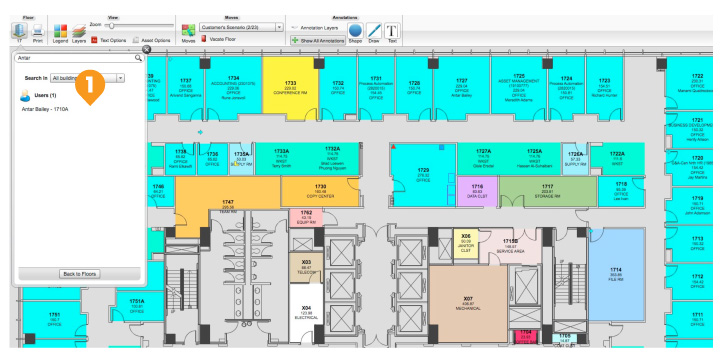How to Use IWMS Data to Revolutionize Your Workspace


Not so long ago, the mere ability to collect data and make surface-level observations was enough to slingshot organizations to the top of their industries. But today, there’s much more to it. The most successful organizations are those that have become so good at translating data into action, estimates and assumptions have been completely removed from their strategy and forecasting.
These organizations use software and technology to keep an eye on every moving part of their business. More specifically, they are using Integrated Workplace Management Systems (IWMS), which consist of various customizable modules that measure key business operations. The reason integrated systems are beating out the use of separate solutions is simple. Segmented data does not create a true and accurate visual of how processes are related and supporting one another.

From a single sheet of paper to an entire office building, here’s how to use IWMS data to revolutionize your workplace.
1. Meet & Forecast Spatial Demands
Configure space, visitor and reservation management modules so they work together to illustrate precisely what space exists, how it’s being used, by whom and how often. Especially for organizations that see a significant amount of outside traffic throughout the day, data collected via this integration will provide insight into peak operating hours and how occupancy volumes impact spatial demands. Furthermore, you’ll be equipped to manage space with greater efficiency and flexibility.
 2. Make Highly Calculated Moves
2. Make Highly Calculated Moves
Adding or changing an employee’s placement, or relocating an entire company involves many unexpected layers. Software that helps manage moves—especially when integrated with asset tracking, service request, space management and mail management modules—puts employees, assets and maintenance on the map—literally. This integration provides visual data that enables managers to become maestros as they orchestrate every moving piece against existing and new floor plans.
3. Measure Technician and Facility Performance
Forecasting and coordinating on-demand and preventative maintenance is a major part of a facilities manager’s job. By integrating service request and asset tracking software, request data can be viewed in real time against a current floor map to zero in on specific assets and locations. Managers will also benefit from having each asset’s complete profile on hand, including support information and contract terms. Furthermore, this data can be used to measure technician and facility performance over time.
4. Meticulously Track Mail, Packages & Documents
Imagine an office building where no package, piece of mail or physical document ever went missing. Mail tracking software includes tools like barcode scanning and signature history that tracks data and enables management to monitor the journey of every parcel from the moment it enters the mail center to the moment it’s signed for by a recipient. Likewise, file tracking tools archive and share the custody for physical documents and files.
5. Master Inventory & Uncover Savings Opportunities
Inventory management software enables managers to monitor orders, quantities, utilization, cost and more. When integrated with a copy and print management module, this insight becomes even more defined—right down to a single sheet of paper. By reviewing the data generated by these two modules, management can identify areas of waste and more accurately forecast order times, cost and quantities.
They key to making sense of all this data? Take advantage of your IWMS’s features and analyze report findings over time. It’s the only way to make data-driven decisions an efficient practice and truly forecast future needs.